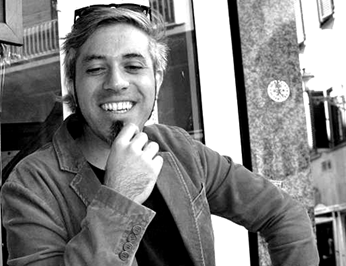Well before going into the large annular hall of the Luigi Pecci Center for Contemporary Art in Prato, a happy note introduced the visit to the Ren Hang. Nudes exhibition scheduled until August 23, 2020: the presence, quite embarrassed, of school-age children.
Sex education, a theme whose real shame in Italy is the shortage and backwardness of the offer, acquired in the 21st century an urgency of great relevance for the approach of old and new implications in the social and philosophical field. If the school is slow to fill the void, or rather frolic in pathetic privacy issues, why can’t we elect the museum as a guardian of healthy procreative education?
There will hardly be a better opportunity than this.
The ninety photographs exhibited under the sueprvision of the director Cristiana Perrella, well experienced on video and photographic languages, are satiating tastes of a ten-year research focused on unconditional nudity, promoter of a generational redemption and capable even, as just suggested, of a didactic modulation. Ren Hang, who died prematurely in 2017, uses his evasive force in a targeted poetic vision, effortless and at times childish but always of great persuasion. It is more approachable to photographers like Ryan McGinley than to the “neighbor” Nobuyoshi Araki, to western models in substance, above all those related to the world of advertising and marketing; unlike the American, however, the hedonism of the finished (or immortalized) body is replaced by a delicate but euphoric hybridization with nature, indeed a “return” to nature. The eye of the observer does not investigate, sex does not become a photographic punctum, also by virtue of an absent caricatural exaltation of the erogenous zones, replaced by genuine and primitive connaturation.
The raw bodies now vaporize in the city air, now they insinuate themselves into the lush green like water snakes, without ever denying, except for some licentious lipstick stains (small misogynistic heritage or narcissism?), in favor of a Dionysian affirmation. A conscious intoxication albeit dented by censorship issues, which are not even exclusive to the Chinese homeland but also continuing in western territories, as some critics rightly pointed out, in the guise of a Homeric tale Ren Hang embodies the stateless and faithful stateless hero. From these intentions an ethnographic consideration arises: given that the city of Prato brings together the most nourished and long-lived Chinese community in Italy, it would certainly be of interest to accept the response of this particular type of public towards the very young compatriot, especially for welcome varied opinions and not firm to good intentions.
With the record reached in the past year of the two first Italian-Chinese councilors elected in Prato, hoping for the widespread invitation to participate involved in the common Center for contemporary arts can be considered the minimum to start an excellent cultural debate.
Beyond what can emerge or submerge, Ren Hang’s Nudes show how the enhancement of important and showy spaces, such as those of the Centro Pecci, does not require film trappings or (or) scenic installations, but can marry excellent contents taken in a lean, essential, certainly satisfactory form.
Luca Sposato
Info:
Ren Hang. Nude
curated by Cristiana Perrella
June 4 – August 23, 2020
from 12.00 to 20.00, from Thursday to Sunday
Luigi Pecci Center for Contemporary Art in Prato
Viale della Repubblica 277, 59100, Prato
Full admission: € 7; reduced admission: € 5
Entrance to the other exhibitions of the Centro Pecci remains free until 31 July.
www.centropecci.it
 Ren Hang, Nude, 2016. Courtesy Stieglitz19 and Ren Hang Estate
Ren Hang, Nude, 2016. Courtesy Stieglitz19 and Ren Hang Estate
 Ren Hang, Untitled, 2015. Courtesy OstLicht Gallery and Ren Hang Estate
Ren Hang, Untitled, 2015. Courtesy OstLicht Gallery and Ren Hang Estate
 Ren Hang, Untitled, 2012. Courtesy Stieglitz19 and Ren Hang Estate
Ren Hang, Untitled, 2012. Courtesy Stieglitz19 and Ren Hang Estate
 Ren Hang, Portrait Plant, 2012. Courtesy Stieglitz19 and Ren Hang Estate
Ren Hang, Portrait Plant, 2012. Courtesy Stieglitz19 and Ren Hang Estate

Luca Sposato was born in Tirano, Valtellina, in February 1986, he lives in Prato working in the Florentine metropolitan plain (Pistoia-Prato-Florence). Art historian, critic and curator of art and xylograph. He has curated exhibitions in private galleries, international fairs and public installations, both in Italy and abroad, including a review in historic buildings of Pistoia and the scenography of a musical show at the Textile Museum of Prato. He writes for various magazines both in print and online. His critical research starting from the art graphics, parallel practiced, focuses on the traced, physical and semiotic sign, expanding the study to the time synchronization between past and present, and cultivating curatorial practice as an artistic medium.






NO COMMENT